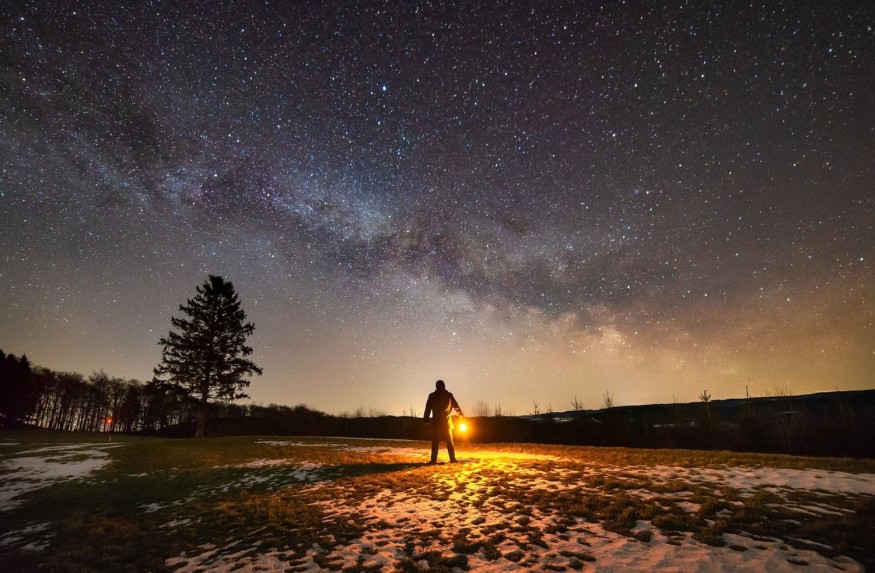The image has captivated internet users, receiving over one million likes. Several users found it "extraordinarily beautiful." Another said it was "phenomenal" and "absolutely incredible."
NASA Hubble Space Telescope Captured Andromeda Galaxy
The image was first published in 2015 and was republished by NASA. It depicts a 48,000-light-year stretch of the galaxy in its natural visible-light color, according to the agency. Because the galaxy is only 2.5 million light-years away from Earth, it is a much larger target in the sky than Hubble's numerous galaxies that are billions of light-years away.
The Instagram post divides the panoramic image into three parts, with the last showing a band of blue stars with countless stars scattered throughout the image.
The first image depicts a bright spot emanating from the lower left portion of the Andromeda galaxy, with bands extending out in all directions. The light fades away in the top quarter of the image, leaving mostly black and blue space with countless stars. The second image depicts light dissipating, with purple and blue bands giving way to the blackness of space.
The Panchromatic Hubble Andromeda Treasury (PHAT) program created the panorama. Images were captured by viewing the galaxy in near-ultraviolet, visible, and near-infrared wavelengths with Hubble's Advanced Camera for Surveys and Wide Field Camera 3. This cropped image depicts a 48,000-light-year stretch of the galaxy in its natural visible-light color, as captured by Hubble's Advanced Camera for Surveys in red and blue filters.
In a blog post on its website, NASA compared it to taking a picture of the beach and resolving individual grains of sand. Over 100 million stars are visible in the panoramic view, with some in thousands of star clusters embedded in the disk. The image provided the first data to reveal star populations in relation to their home galaxies.

NASA Continues Capturing Images of the Galaxy Through Hubble Space Telescope
In a more recent photo, the Hubble Space Telescope captured an image of multiple galaxies. LEDA 58109, located in the upper right, is the most visible galaxy. It is flanked to its lower left by two galactic objects, one of which is a galaxy with an active galactic nucleus (AGN) named SDSS J162558 14+435746, which partially obscures another galaxy, SDSS J162557 25+435743.5.
While galaxy classification is sometimes presented as a dichotomy of spiral and elliptical, NASA says this recent Hubble image shows how diverse galaxies can be, with some defying either spiral or elliptical classification.
JWST will undoubtedly continue to produce images of deep space that will aid in discovering new mysteries about the universe in which we live. But don't write off Hubble's ability to continue capturing amazing and detailed images just yet. The telescope still has plenty to offer, and we eagerly await all of its discoveries.
RELATED ARTICLE : Andromeda Galaxy Is Acting Violently, Milky Way Might Be Its Next Target
Check out more news and information on Space in Science Times.
© 2025 ScienceTimes.com All rights reserved. Do not reproduce without permission. The window to the world of Science Times.












